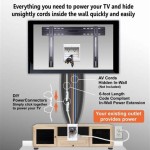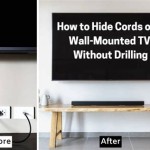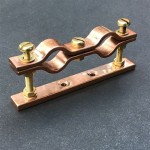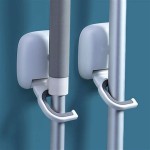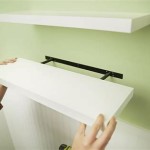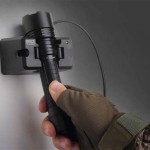TV Wall Mounts for Slanted Ceilings: A Comprehensive Guide
Mounting a television on a wall is a popular way to save space and improve viewing angles. However, when dealing with a slanted or angled ceiling, the process becomes more complex. Standard wall mounts are designed for flat, vertical surfaces and are not suitable for the geometries presented by vaulted, cathedral, or angled ceilings. Therefore, specialized TV wall mounts for slanted ceilings are required to ensure safe and aesthetically pleasing installations.
These specialized mounts are engineered to compensate for the angle of the ceiling, allowing the TV to hang straight and level. They often involve adjustable arms, swivel mechanisms, and tilt capabilities to provide optimal viewing from various positions in the room. Selecting the appropriate mount and ensuring correct installation are crucial for both the safety of the equipment and the overall viewing experience.
Understanding the Challenges of Mounting a TV on a Slanted Ceiling
The primary challenge lies in counteracting the angle of the ceiling. A standard wall mount, when attached to a slanted surface, will result in the television also being angled. This can lead to distorted viewing angles, neck strain, and an overall unsatisfactory viewing experience. Furthermore, the weight distribution becomes uneven, potentially stressing the mounting hardware and increasing the risk of the TV falling. Several factors contribute to making the installation more complicated. These include:
Ceiling Angle: The steeper the angle, the more specialized the mount needs to be. A shallow angle might be manageable with a standard mount and some shimming, but steeper angles require mounts specifically designed to compensate.
Weight of the TV: Larger and heavier TVs impose a greater strain on the mount. The mount must be rated to support the TV’s weight, and the ceiling structure must be strong enough to bear the load.
Stud Location: Finding suitable studs in the ceiling to anchor the mount is essential. Unlike vertical walls with consistently spaced studs, slanted ceilings may have irregular stud placement, requiring careful planning and potentially the use of bridging between studs for secure attachment.
Wiring: Running power and signal cables to the TV can be more challenging in a slanted ceiling environment. Concealing wires inside the wall or ceiling requires careful planning and potentially professional installation to comply with building codes and ensure safety.
Aesthetic Considerations: The mount should not only be functional but also visually appealing. A bulky or poorly designed mount can detract from the overall aesthetics of the room. Choosing a mount that complements the TV and the room's decor is important.
Types of TV Wall Mounts for Slanted Ceilings
Several types of TV wall mounts are designed to address the challenges of installing televisions on slanted ceilings. Each type has its strengths and weaknesses, making it suitable for different scenarios. The appropriate choice depends on the ceiling angle, TV size and weight, and desired viewing flexibility.
Ceiling Mounts with Adjustable Extension Poles: These mounts attach to the ceiling and feature an adjustable extension pole that hangs down, allowing the TV to be positioned at the desired height. The pole typically has a swivel mechanism and tilt capability for optimal viewing angles. They are particularly well-suited for cathedral ceilings or situations where the viewing area is below the highest point of the angled ceiling. The adjustability of the extension pole allows for fine-tuning the TV's position.
Angled Wall Mounts with Swivel and Tilt: These mounts are specifically designed to attach to angled walls and compensate for the slant. They often feature a swivel mechanism that allows the TV to be rotated horizontally, providing flexibility in viewing angles. The tilt function allows the TV to be angled up or down to optimize the viewing experience. These mounts are beneficial when the TV needs to be positioned close to the wall.
Full-Motion Articulating Mounts: While not exclusively designed for slanted ceilings, some full-motion articulating mounts can be adapted for use in such situations. These mounts feature multiple arms and joints that allow for a wide range of motion, including swivel, tilt, and extension. While they require careful planning and potentially some modification to ensure proper alignment, they offer the greatest flexibility in positioning the TV. These are a good option where the viewing distance varies considerably.
Custom-Built Mounts: In situations where standard mounts are not suitable, a custom-built mount may be necessary. This option involves designing and fabricating a mount specifically tailored to the ceiling angle, TV size, and desired viewing position. Custom mounts offer the greatest degree of flexibility but are typically more expensive and require specialized expertise. They are often employed in commercial settings or unique architectural situations.
When selecting a TV wall mount for a slanted ceiling, it is important to consider the weight capacity of the mount. The mount must be able to support the weight of the TV, with a safety margin to account for any additional stress or strain. Also, consider the VESA (Video Electronics Standards Association) compatibility. Ensure that the mount supports the VESA mounting pattern on the back of your television.
Installation Considerations for TV Wall Mounts on Slanted Ceilings
Installing a TV wall mount on a slanted ceiling requires careful planning and execution. Improper installation can result in the TV falling, causing damage to the equipment and potentially injuring people. It is often recommended to hire a professional installer, particularly if you are not comfortable working with power tools or have limited experience with home improvement projects. However, if you choose to install the mount yourself, it is crucial to follow the manufacturer's instructions carefully and take necessary safety precautions.
Stud Finding: Before starting the installation, locate the studs in the ceiling. Use an electronic stud finder or manually probe the ceiling to identify the location of the studs. Ensure that the studs are strong enough to support the weight of the TV and the mount. If the existing studs are not properly positioned, consider adding bridging between the studs to provide a secure mounting surface.
Mounting Plate Attachment: Attach the mounting plate to the studs using appropriate screws or bolts. Ensure that the mounting plate is level and securely fastened to the studs. Use shims if necessary to compensate for any unevenness in the ceiling surface. Double-check the attachment to ensure it is secure.
Cable Management: Plan the routing of power and signal cables before installing the TV. Conceal the cables inside the wall or ceiling using cable sleeves or conduits to create a clean and professional look. Ensure that the cables are not pinched or strained, as this can damage the cables and create a fire hazard. Follow electrical codes when running wiring inside the wall or ceiling. If you are unsure about electrical work, hire a qualified electrician.
TV Attachment: Once the mounting plate is securely attached to the ceiling, attach the TV to the mount. Follow the manufacturer's instructions for attaching the TV to the mount. Ensure that the TV is securely fastened and level. Use a level to verify that the TV is hanging straight and make any necessary adjustments.
Testing and Adjustment: After the TV is installed, test the swivel and tilt functions to ensure that they are working properly. Adjust the angle and position of the TV to optimize the viewing experience. Tighten all screws and bolts to ensure that the mount is secure. Periodically check the mount for any signs of loosening or wear. Using a proper tension wrench to tighten screws can prevent over-tightening and structural weakness of the installation.
When installing a TV mount, it is important to prioritize safety. Wear safety glasses to protect your eyes from dust and debris. Use a ladder that is stable and properly positioned. If you are working near electrical wires, turn off the power to the circuit breaker before starting the installation. If you are unsure about any aspect of the installation, consult a professional installer.
Choosing the right TV wall mount for a slanted ceiling requires that the consumer understands the product’s specifications and the installation environment. By carefully considering the challenges, selecting the appropriate mount, and following proper installation procedures, it is possible to safely and effectively mount a TV on a slanted ceiling, enhancing the viewing experience and optimizing the use of space.

Fold Up Retractable Ceiling Mount For Tv Led Lcd 17 37 Black Mounts

Full Motion Ceiling Tv Mount Mi 509b Features

Tv Mounts

Perlesmith Pscm2 Full Motion Tv Ceiling Mount Fits 26 55 Inch Tvs Gary Anderson

Retractable Angled Ceiling Tv Mount

7 Tv Under Stairs Ideas Ceiling Mounted Wall

Mount It Folding Tilting Ceiling For 23 In 55 Tvs Mi 4225 The Home

Full Motion Ceiling Tv Mount Mi 509b Features Youtube

Whole Tv Wall Mount For Slanted Ceiling Manufacturer And Factory Charm Tech

Whole Tv Wall Mount For Slanted Ceiling Manufacturer And Factory Charm Tech

